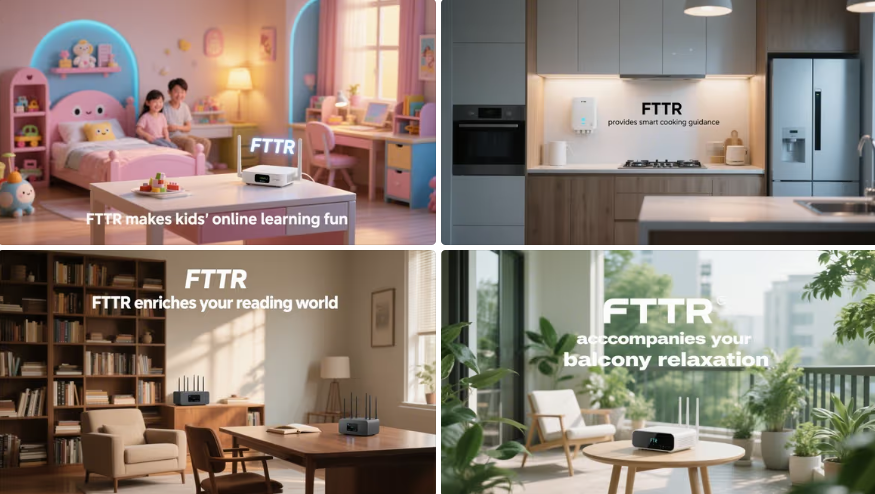FTTR (Fiber to the Room) is an all-optical networking technology that replaces traditional copper cables (e.g., Ethernet cables) with fiber optics, delivering gigabit or even 10-gigabit network coverage to every room in a home. It enables ultra-high-speed, low-latency, and highly stable whole-home connectivity. Below are the key features and applications of FTTR:

1. Core Technologies of FTTR
- All-fiber transmission: Extends fiber optics from the household entry point (FTTH) to each room, eliminating the bandwidth limitations of copper cables.
- Master-slave optical gateways:
- Master gateway: Connects to the ISP’s fiber, handling optical-electrical conversion and network management.
- Slave gateways: Deployed in individual rooms, connected to the master via fiber, providing Wi-Fi and wired access.
- P2MP/P2P architecture: Uses passive optical splitters (PON) or point-to-point fiber links for flexible scalabily.
2. Advantages Over Traditional Solutions
| Comparison | FTTR | Traditional FTTH + Ethernet/Wi-Fi |
| Bandwidth | Gigabit/10G to every room | Limited by copper cables (e.g., Cat5e/Cat6) |
| Latency | Lower (fiber efficiency) | Higher (signal attenuation/interference) |
| Coverage | Whole-home, stable signal | Depends on router placement, dead zones possible |
| Future-proofing | Supports upgrades (e.g., 10G PON) | Requires rewiring |
3. Typical Use Cases
- Households: Large homes, villas, smart homes (high device concurrency).
- Businesses/Hotels: High-density connectivity, video conferencing, cloud办公 (cloud office).
- 4K/8K/VR: Ultra-high bandwidth and low-latency immersive experiences.
4. Deployment Challenges
- Higher cost: Fiber deployment and optical gateways are more expensive than traditional setups.
- Installation complexity: Requires professional fiber routing; older buildings may pose difficulties.
- Device compatibility: Some devices still rely on Ethernet or Wi-Fi from slave gateways.
5. Current Development Status
- ISP adoption: Carriers like China Mobile, Telecom, and Unicom are piloting FTTR with bundled service packages.
- Industry standards: Vendors like Huawei and ZTE are pushing standards (e.g., Huawei’s C-WAN architecture).
Conclusion
FTTR is a key direction for next-gen home networks, especially for high-demand scenarios. As fiber costs decline and ecosystems mature, it may gradually replace traditional copper-based solutions.
What we can do?
HEAT SHRINKABLE SPLICE CLOSURE/SLEEVE/TUBE (RSBJ,RSBA, XAGA, VASS, SVAM)
FIBER OPTIC SPLICE JOIN CLOSURE/BOX
ODF/PATCH PANEL
KINDS OF CABINETS
COMPLETE SOLUTION OF FTTx
www.qhtele.com
overseas@qhtele.com
ChengDu QianHong Communication Co., LTD
CHENGDU QIANHONG SCIENCE AND TECHNOLOGY CO., LTD
Post time: May-08-2025




